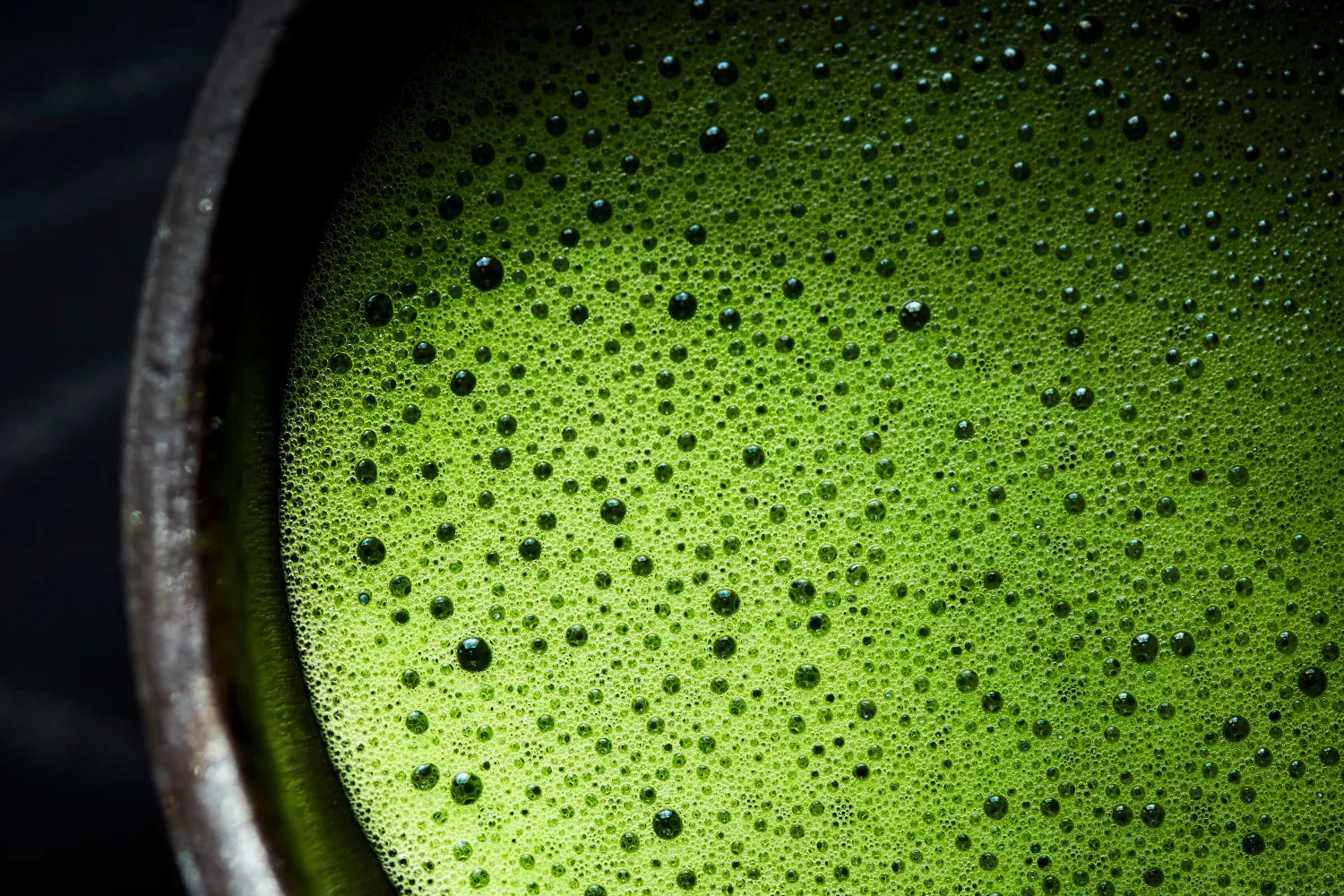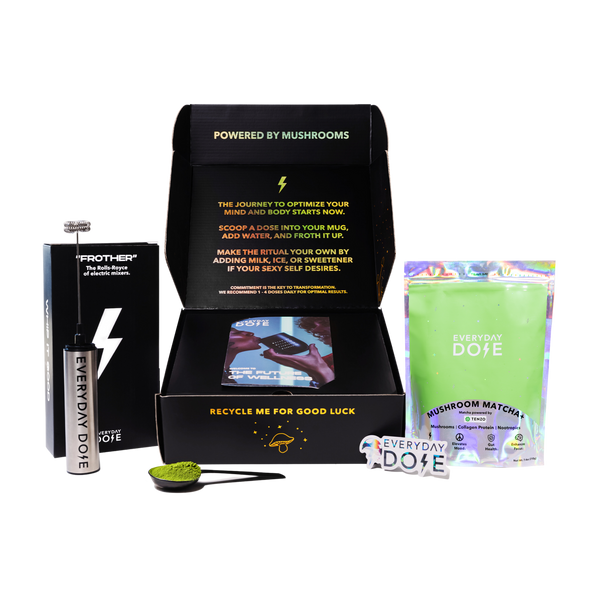Can Metal Affect Matcha?

Some people casually enjoy a good cup of matcha, but others are dedicated to crafting the perfect cup. These connoisseurs of matcha weigh out the powder, boil water to exact temperatures, and use specific instruments to make the perfect flavor and texture.
If you’re on the search for a flawless cuppa, you may be wondering what techniques and tools you need to use. Read on to learn more about matcha utensils, whether you can use metal utensils with matcha, and how to store matcha to keep it fresh.
What Is in Matcha?
Matcha is a delicious-tasting tea, but it’s also much more than that. It’s packed with compounds that can support your health from every direction. These compounds also give matcha its signature taste and color.
They include the following:
- Catechins: These are the antioxidants responsible for matcha’s “superfood” status. They can help combat free radicals and support your overall health.
- L-Theanine: This amino acid can promote relaxation while keeping you alert. This is also responsible for matcha’s natural sweetness.
- Chlorophyll: Beyond giving matcha its vibrant green hue, chlorophyll can help detoxify the body by binding to toxins and metals.
- Caffeine: Matcha delivers a gentle buzz without the crash, thanks to its slow-release energy.
- Vitamins and Minerals: Matcha contains a blend of A, C, E, potassium, and zinc to support immunity and cell repair.
And this is just for matcha! When you start adding other beneficial ingredients to matcha, the list of beneficial compounds gets larger and larger.
For instance, our Mushroom Matcha+ also contains lion’s mane and chaga mushrooms, which contain compounds that can support focus, mental health, gut health, and immunity. It also contains collagen and extra L-theanine, which can support skin health and sleep.
Can Matcha Go Bad?
Unfortunately, matcha doesn’t last forever. Like any green tea, it can “go bad,” but not in the moldy milk kind of way.
Matcha oxidizes, meaning its compounds react with oxygen over time. This leads to duller flavor, faded color, and a loss of antioxidants. Oxidation speeds up when matcha is exposed to light, heat, or air.
Does Metal Make Matcha Go Bad?
There’s a myth out there that using metal whisks or bowls to prepare matcha can make it go bad. The idea is that metal somehow reacts with the delicate compounds in matcha, wrecking its flavor and benefits. However, we’re happy to share that this myth is mostly nonsense.
While oxidation does affect matcha’s taste and quality, the minuscule contact time with metal during preparation has virtually no impact. So, unless you’re storing matcha in an open metal jar for months (don’t do that), you can safely whisk away, even with a metal whisk.
What Does Science Say?
Let’s get nerdy. Metal ions can technically interact with tea compounds, with aluminum in particular showing a faint link to more astringent flavors in tea. However, the exposure during whisking or brewing is negligible.
The reality is that catechins in matcha are more affected by oxygen and light than by brief metal contact. The myth likely stems from traditionalists preferring bamboo whisks (chasen) for cultural reasons, not scientific ones. Still, if you’re worried, you can stick to non-metal tools for peace of mind.
How Can You Keep Matcha Fresher for Longer?
Stirring your matcha with a metal spoon likely won’t make your drink taste any different or take away its health benefits. However, there are other factors that can have these unwanted effects. Here’s the lowdown on how exactly to keep your matcha tasting and looking delicious.
Store It Wisely
Matcha is delicate, and improper storage can ruin its freshness. To preserve its vibrant color, grassy aroma, and health benefits, keep matcha in an airtight, opaque container. Exposure to light, air, and humidity causes oxidation, leading to a dull taste and faded color.
Store matcha in a cool, dry place — your fridge works well, but make sure it’s sealed tight to avoid absorbing odors. For maximum freshness, use your matcha within one to two months of opening. You can also buy smaller quantities to make sure you’re always using the freshest powder for the best results.
Use the Best Utensils
While you can whisk matcha with a fork, using traditional tools makes all the difference. A traditional chasen creates a frothy, creamy texture that enhances the matcha experience, while metal whisks often fall short in aerating the powder.
A matcha scoop (chashaku) can help you get accurate measurements, preventing the bitterness that can come from using too much matcha. Even the bowl matters — a wide, shallow matcha bowl (chawan) allows for smooth whisking.
These tools aren’t just for tradition — they elevate the taste and texture, ensuring a perfectly blended cup every time. Investing in the right utensils takes your matcha from basic to barista-worthy with minimal effort.
Drink It Fresh
Matcha is best enjoyed fresh — not just because it tastes better, but because its health benefits are at their peak. Freshly made matcha offers a vibrant, grassy flavor with subtle umami notes, while older or poorly stored matcha can taste stale and flat.
If you let matcha sit too long, oxidation kicks in, leading to flavor degradation. To enhance the experience, whisk your matcha right before you sip it and savor the fresh frothiness.
The Bottom Line
While you may have heard myths about metal and matcha, the truth is that your matcha won’t be noticeably affected by a little metal. There’s no need to throw out your metal frother — especially when it’s so easy to use!
Whether you’re using specialized tools or savoring your matcha fresh, small steps can make a big difference in taste, texture, and overall enjoyment. Matcha began as an art form, and we still enjoy the art of matcha today when we take time to slow down and savor our tea. For more tea-drinking tips, visit the Everyday Dose blog today.
Sources:
The Japanese Tea Ceremony | The Metropolitan Museum of Art
Health Benefits and Chemical Composition of Matcha Green Tea: A Review | PMC








